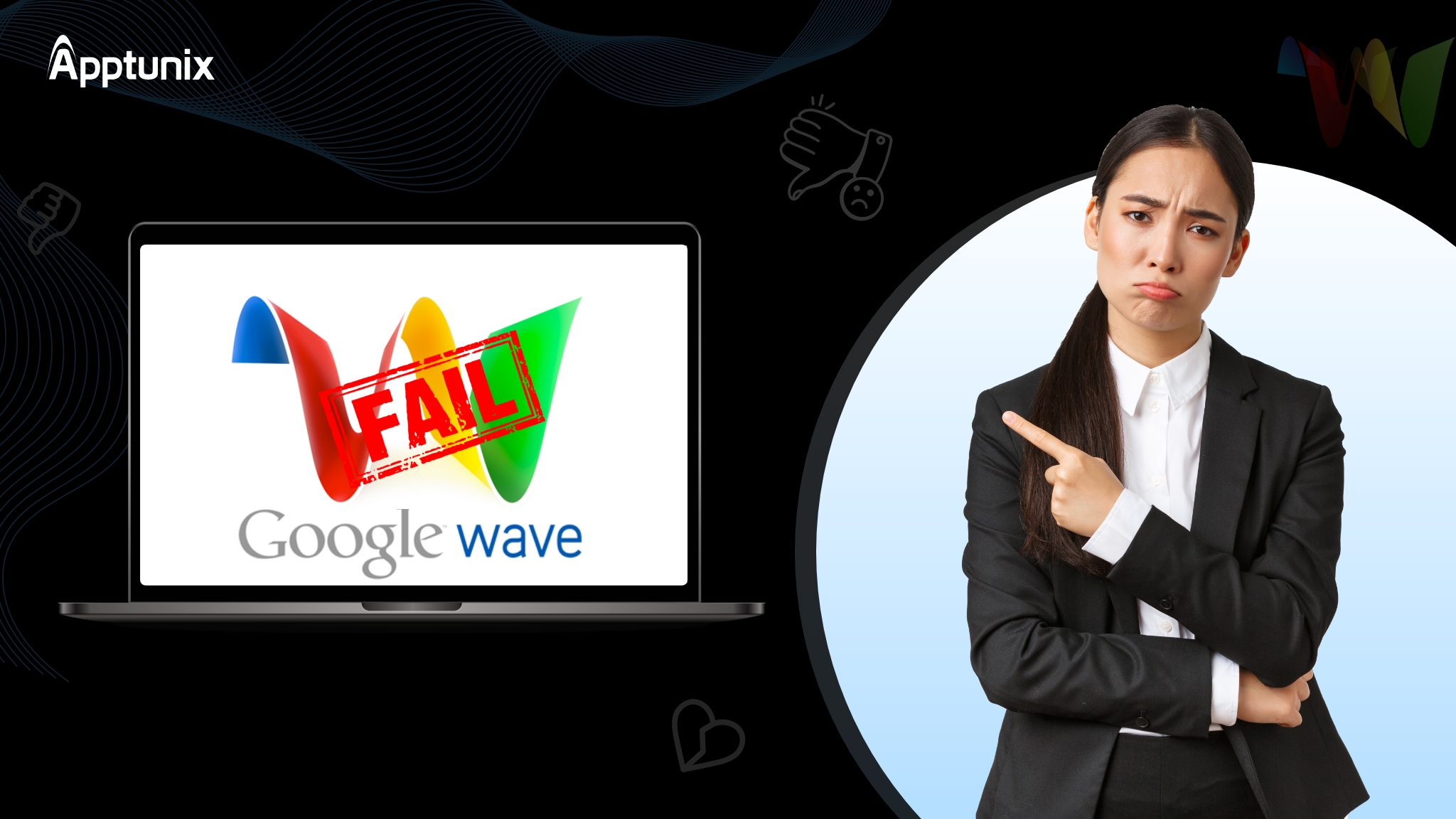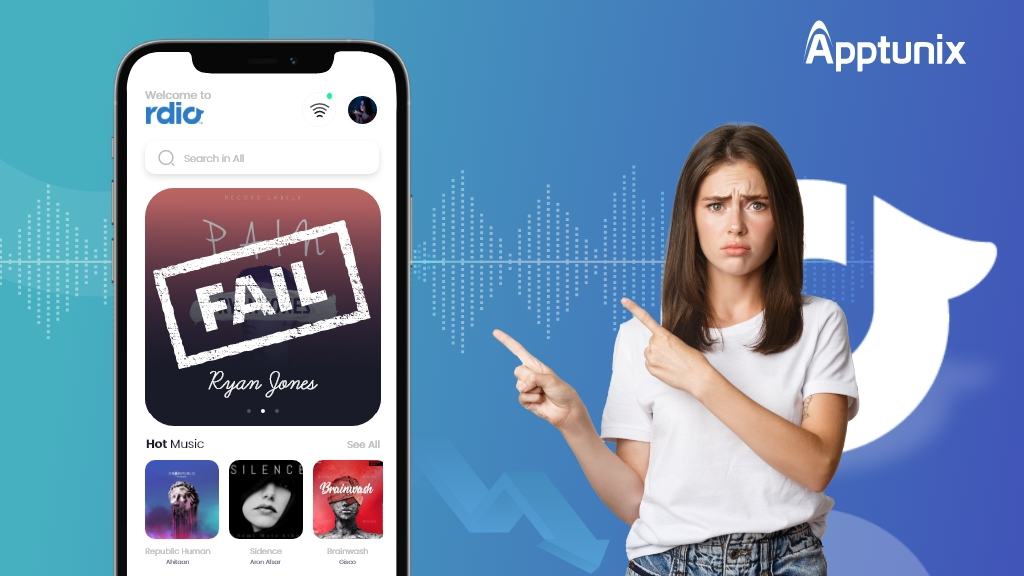Don't miss the chance to work with top 1% of developers.
Sign Up Now and Get FREE CTO-level Consultation.
Confused about your business model?
Request a FREE Business Plan.
Why Quibi Failed in Less Than a Year: 5 Mistakes & Lessons to Learn

Mobile apps are getting more and more popular with every passing day. However, as per reports, around 80-90% of mobile applications available in the app stores are abandoned after a single use. It shows how difficult it is to Keep Mobile Users Hooked.
No doubt that designing and developing a mobile app is a tedious task but what’s more troublesome is scaling. Even after you launch your app and it gets traction, there is no guarantee that it will sustain itself in the ever-evolving mobile app market.
There are many such failure examples in the mobile app industry and today we are going to discuss one of them called Quibi. It is a classic example of a mobile app that failed despite the initial hype.
Launched in 2020, the app raised an impressive $1.8 billion and gained significant traction in a short period. However, it did not last long. The story of Quibi is a fascinating success and failure tale that entrepreneurs must explore before launching their own apps.
So, let’s get started to know what happened and what you can learn from its story.
What was Quibi?
Quibi was a short-lived American mobile video streaming application that generated content to stream only on mobile devices. It was founded in August 2018 in Los Angeles as NewTV by Jeffrey Katzenberg but was later renamed Quibi after a relaunch in 2020.

In a short span of time, the service raised $1.8 billion from investors. However, the app failed to sustain itself and was shut down permanently in December 2020. In January 2021, Quibi’s content library was sold to Roku, for around $100 Million. The platform’s flawed concepts and rapid failure turned many heads to its story and provided invaluable lessons for entrepreneurs.
The company was the brainchild of two well-known professionals; one from the tech background and the other from the entertainment industry. It means they were having the best of both worlds needed to develop a video streaming platform. But, things still didn’t work.
The founder of Quibi, Jeffrey Katzenberg, helped turn around Disney’s animation department in the 90s and later he co-founded Dreamworks and headed up its animation department. The CEO of the company was Meg Whitman. Earlier, she was the CEO of eBay and later became the CEO of HP.
Together, they designed Quibi to target people with irregular free time and the business raised more than $1.8 billion under their leadership in just a few months.
Quibi Business Model
As the name itself describes, Quibi means Quick Bites. The app was developed to deliver short-form content videos to consumers who did not have time to watch long series or movies on Netflix. The founders of Quibi aimed to make money using two models – subscriptions and advertising. Let’s understand the app’s working using Quibi Business Model Canvas:

Doesn’t it sound like a great business idea and concept? The app only targeted people who were not having time to watch long-form content on apps like Amazon Prime, Netflix, and HBO. Also, it was designed in a manner that fulfilled the needs of its target audience.
But, then, what went wrong? Let’s figure out the mistakes that Quibi made in our next section.
Also Read: All You Need to Know About How Does Hulu Work: Business and Revenue Model
Why Quibi Failed and What Can You Learn from Its Failure?
It took Quibi mobile app just around seven months to go from one of the most celebrated app ideas to a disgraceful finish, consuming around $1.8 billion of investment from the giants like Alibaba, Walt Disney, and WarnerMedia in the process.
Here are some of the reasons why it happened and what you need to learn:
1. Quibi’s Pricing Wasn’t Justified
When Quibi was released in 2020, TikTok and Youtube both were already popular in the market. And Quibi targeted almost the same customer segment as these leading small video streaming applications.
However, Quibi was not free. It charged $4.99 per month with ads and $7.99 per month without ads.

It means the app charged money for content that users were already accessing for free on popular apps like Youtube and Tiktok. In addition, some of them were also paying for content on apps Amazon Prime, Netflix, and Disney Plus – all of these apps offered much better content than Quibi and charged an equal amount of money. Other popular services like Apple TV and Hulu were even cheaper.
Many experts believe that the set charges were too high for a terrible content-producing app like Quibi and that’s one of the main reasons why it failed. The app also offered a free trial and that was the only reason it got traction in the initial days.
Key Takeaway: Before you launch a product in video streaming or any other industry, be vary of your competitors and their pricing policies. We believe that Quibi didn’t fail just because it was overpriced but because it failed to justify its value to consumers.
Also Read: Business Strategies To Consider From The Top 10 OTT Platforms In The World!
2. The App’s Content Was Not Good Enough
In the video streaming industry, content is king. Because users come to a streaming app to watch something interesting and not to get bored. However, Quibi’s content failed to impress its target audience.
Although Whitman and Katzenberg invested more than $1 Billion in content production, their team failed to produce anything good. As a result, they started mass purchasing the content to create a large library that can compete with the likes of Netflix. However, instead of doing anything good, this approach impacted the content quality of Quibi negatively.
They even bought content that apps like Hulu and Netflix rejected. This content wasn’t even created keeping Quibi’s short-form video content in mind. They simply bought movies and chopped them into pieces to form a series, resulting in a frustrating watching experience for users.
There wasn’t even a single show on Quibi that got hit and the team did nothing about it. On the other hand, competitors like HBO were trying out new strategies every day. When GOT was coming to an end, HBO started advertising its other shows aggressively so that they don’t lose subscribers once GOT ends. They also released and advertised a new show called Chernobyl, which was again a big hit.
Key takeaway: When launching a new product, it is important to create buzz around it to get initial traction. But, what’s even more important is that the product justifies this buzz. If Quibi had even a few hits, the app would have been up and running today.

3. Let’s Put Everything On Pandemic (Justification Inside)
When things don’t go as planned, people often start blaming circumstances and situations. That’s what the leaders at Quibi did, which further made their failure worse. Here is what Quibi’s founder said in one of the interviews:

But, everybody knows that it isn’t true. When people were confined to their homes amid the pandemic, they were having free time like never before. While sitting within the walls of their homes, they had nothing except passing time on their mobile phones. In fact, video streaming is one of the Top Industries that Thrived During the Pandemic.
According to reports, online video consumption in the US was 200% up during the time when Quibi was launched. However, it still failed to get traction. On the other hand, apps like Youtube and Tiktok were thriving at that time. Seeing industry experts stating facts to prove the statement of Quibi’s founder wrong, he himself walked back on his statement and said:
“Simply to blame it on COVID is not fair, and not something either of us (Whitman and him) want to do” – Jeffrey Katzenberg, Founder, Quibi.
Key takeaway: Once you make an entry in the market and become a famous entrepreneur, own everything you say or do. Even if it is a failure, accept it. Because excuses are not for people who want to thrive. It creates a sense of empathy in the hearts of others and works in your favor when you re-enter the market with a new product.
4. Lack of Essential Features
When developing a mobile application, you must decide on its features very carefully keeping your business model and target audience in mind. Quibi not just failed to integrate the essential features in its app, but it also lacked the understanding of its users.
- Content sharing wasn’t allowed
They never understood that when streaming a new movie or series, users like to share it with their friends on social media. As a result, the social sharing feature was missing from the app. The app never allowed users to take screenshots or snippets to share on social media. In other words, they themselves stopped their content from spreading naturally.
- Their USP didn’t work in their favor
Quibi’s major innovative feature or USP was that it provided users with the ability to watch content horizontally as well as vertically on mobile devices. But, that feature was also problematic. It forced everyone who wanted to create content on Quibi to develop it keeping both modes in mind. That was simply another layer of complexity.
But, later on, they also started launching content that wasn’t created for both modes. It resulted in an awful experience for app users and was a major reason behind app failure.
Key takeaway: When selecting the major features of an app, it is crucial to do strong market research so that you do not have to face problems later on. To avoid such blunders, we at Apptunix, always prefer an MVP approach and RAT testing while developing apps.
5. They Didn’t Care About Their Competitors
When Quibi was launched, there were already many popular streaming apps available in the market like Youtube, Tiktok, Netflix, and many others. However, the founders of Quibi always refused to compete with these apps.
While their app idea was based on the fact that people need good quality short-form content to survive, the app’s founders always failed to acknowledge that people are getting that for free and for many years. Quibi didn’t fail because Youtube and other applications existed. But, it failed because the leaders behind the app refused to see those apps as its biggest competitors.
They dismissed the importance of learning from competitors and developing a unique value proposition that would differentiate them.
Key takeaway: Understanding your competitors (direct and indirect) and creating a distinct value proposition is crucial for success in any industry.
Wrapping Up
In conclusion, the story of Quibi serves as a cautionary tale for entrepreneurs who are looking to develop mobile apps. The app failed despite raising $1.8 billion in funding due to a flawed business model and poor execution.
The lesson to learn is that creating a mobile app is a tedious task, but scaling it is even more challenging. At Apptunix, we help entrepreneurs avoid such mistakes and develop successful apps. By following best practices and employing the latest technologies, our mobile app developers new york create apps that deliver value to the users and stand out in the crowded app market. Get in touch to know more about our services and experiences!

Rate this article!
(3 ratings, average: 4.33 out of 5)
Join 60,000+ Subscribers
Get the weekly updates on the newest brand stories, business models and technology right in your inbox.

Nikhil Bansal is the Founder and CEO of Apptunix, a leading Software Development Company helping startups as well as brands in streamlining their business processes with intuitive and powerful mobile apps. After working in the iOS app development industry for more than 10 years, he is now well-equipped with excellent problem-solving and decision-making techniques.

App Monetization Strategies: How to Make Money From an App?
Your app can draw revenue in many ways. All you need to figure out is suitable strategies that best fit your content, your audience, and your needs. This eGuide will put light on the same.
Download Now!Have a Digital Solution ? Don’t Let It Fail.
Make your solutions future ready by using the right tech stack.

















